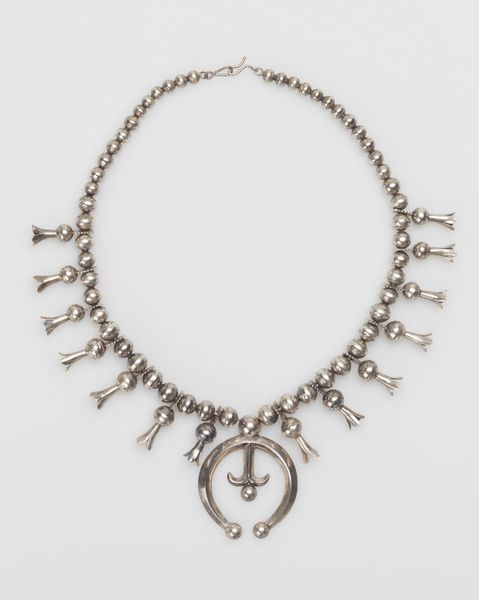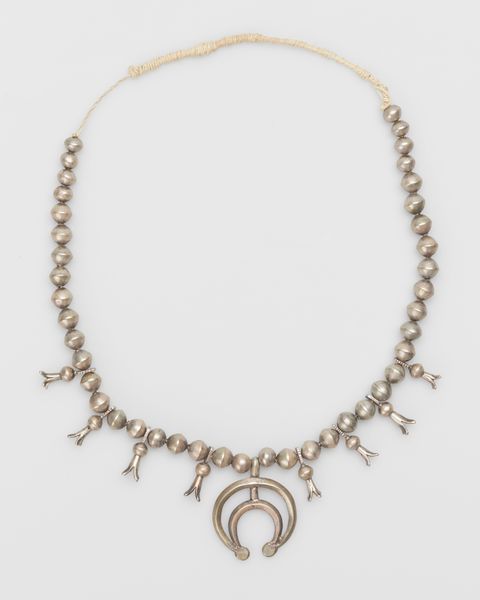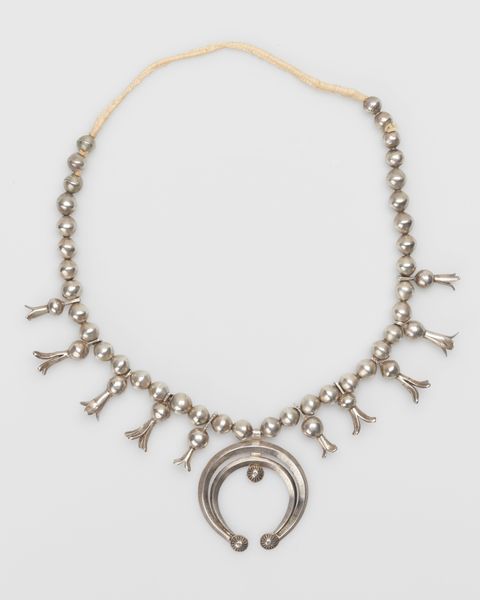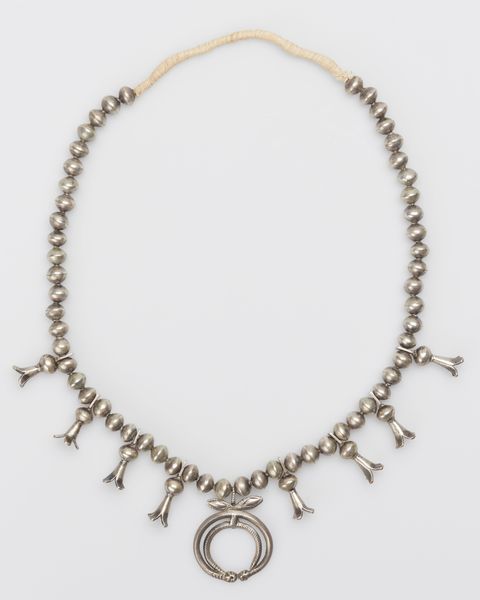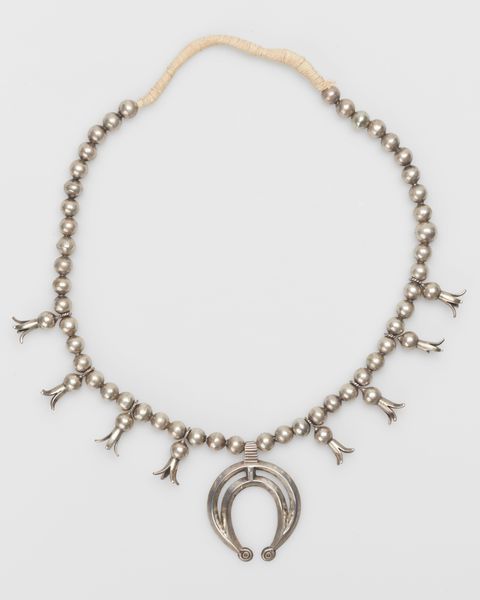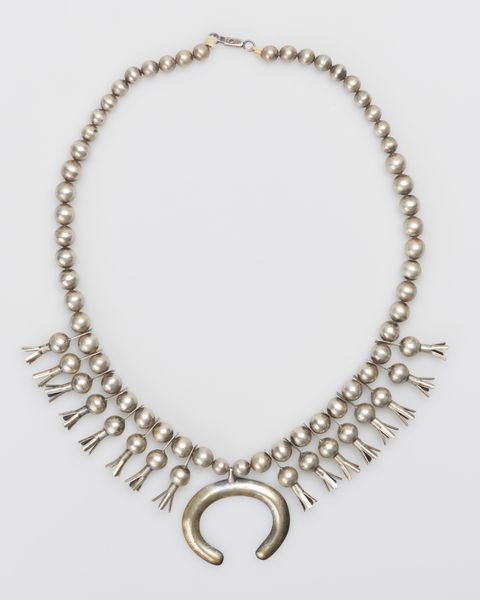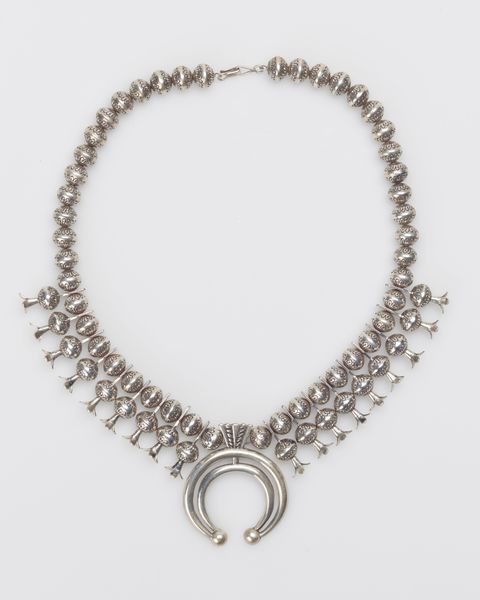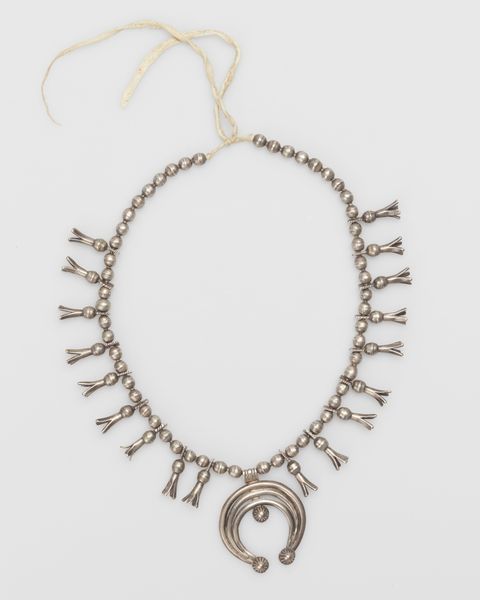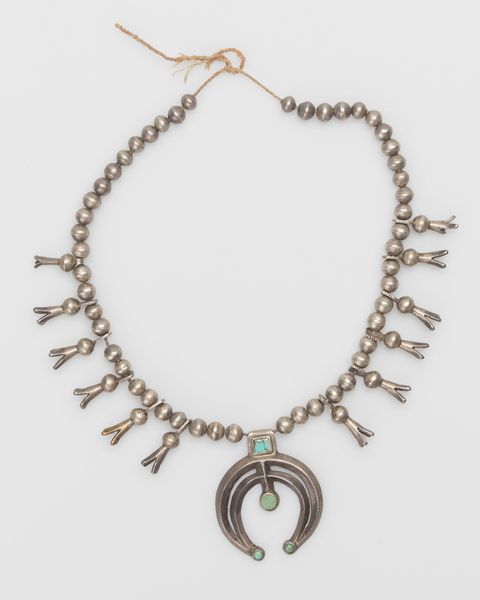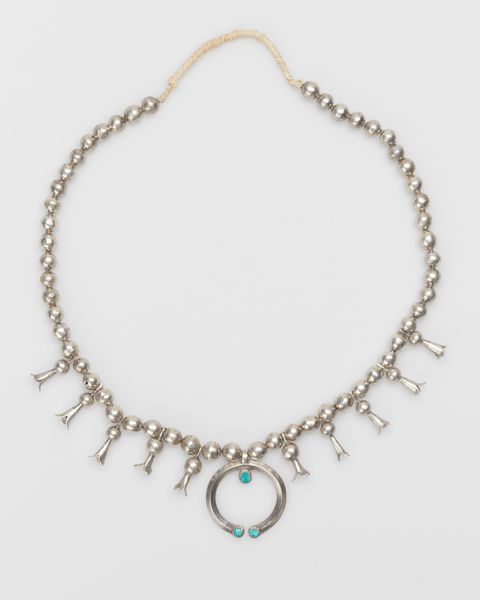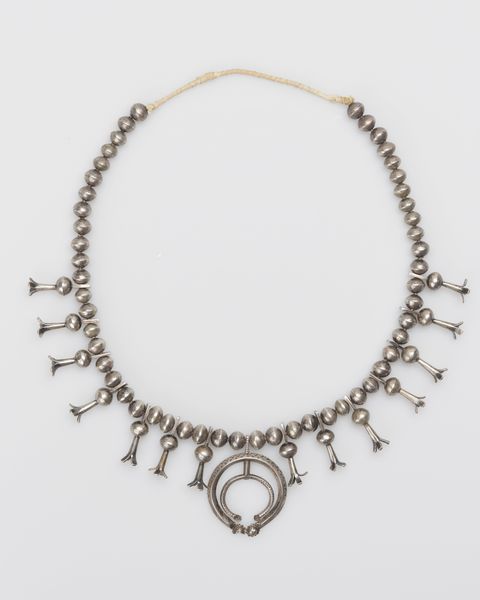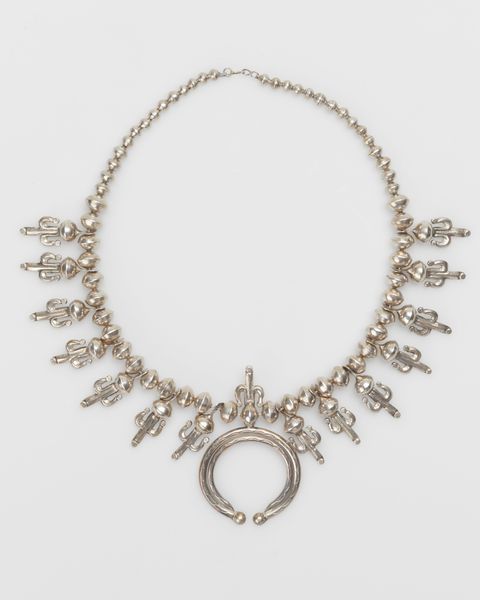
silver, metal
#
silver
#
metal
#
decorative-art
#
indigenous-americas
Copyright: Public Domain
Curator: This stunning silver necklace, dating back to approximately 1935, was created by a Navajo artist. It resides here at the Minneapolis Institute of Art. Editor: It’s mesmerizing. The cool gleam of the silver, the repetition of shapes... It feels incredibly potent, almost talismanic. Curator: Exactly. Its visual language is deeply intertwined with Navajo cosmology and history. The crescent shape, known as a "naja," for example, isn’t originally Navajo; it was adopted from Spanish colonial motifs, representing a blending of cultures and resistance against forced assimilation. It later transformed, within the Diné culture, into a protective symbol against evil. Editor: And looking at the materials and the way they've been worked, it's impossible to ignore the socio-economic context. Silverwork became a vital source of income for Navajo communities in the early 20th century, but access to silver was controlled through trading posts, shaping the artistic production. The skills and labor needed for its creation – the forging, the soldering – speaks to generations of knowledge being passed down, shaping cultural and economic pathways. Curator: Absolutely, and consider who would have worn it. This wasn't simply adornment; it was a statement. Perhaps it was donned during ceremonies, political gatherings, a marker of identity, prosperity and familial belonging. Editor: I also wonder about the individual silversmith. Did they have specific workshops? Were there particular aesthetic traditions they were upholding? What kind of tools did they employ to achieve such consistent detail, for example, in each sphere. Each piece is nearly identical. Curator: Precisely the questions we must ask. What seems 'simply' decorative art contains immense layers of socio-political context. It's through questioning how material shapes artistry and vice-versa, that a new depth is given. Editor: Absolutely. It forces us to rethink the typical labels – decorative art, indigenous art – and realize how much richer the narrative becomes when labor, craft, and context come together.
Comments
No comments
Be the first to comment and join the conversation on the ultimate creative platform.
